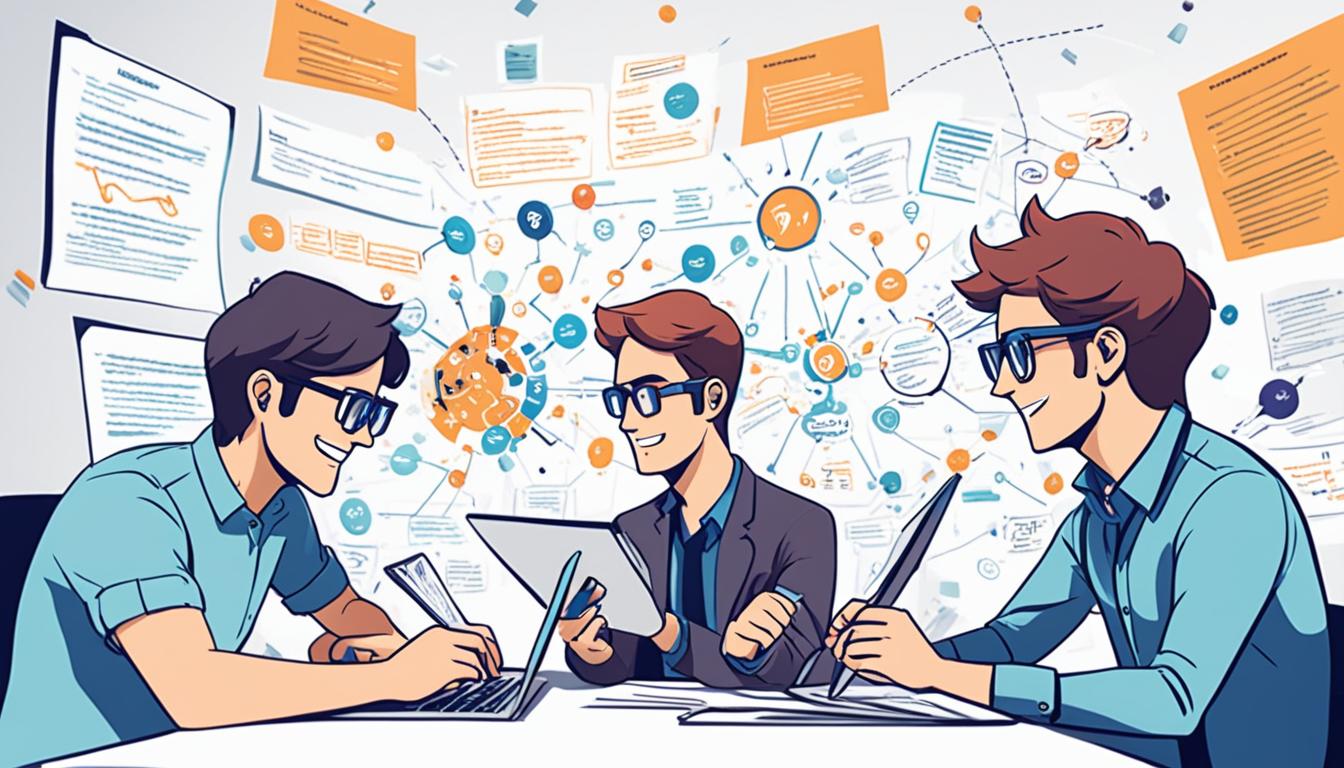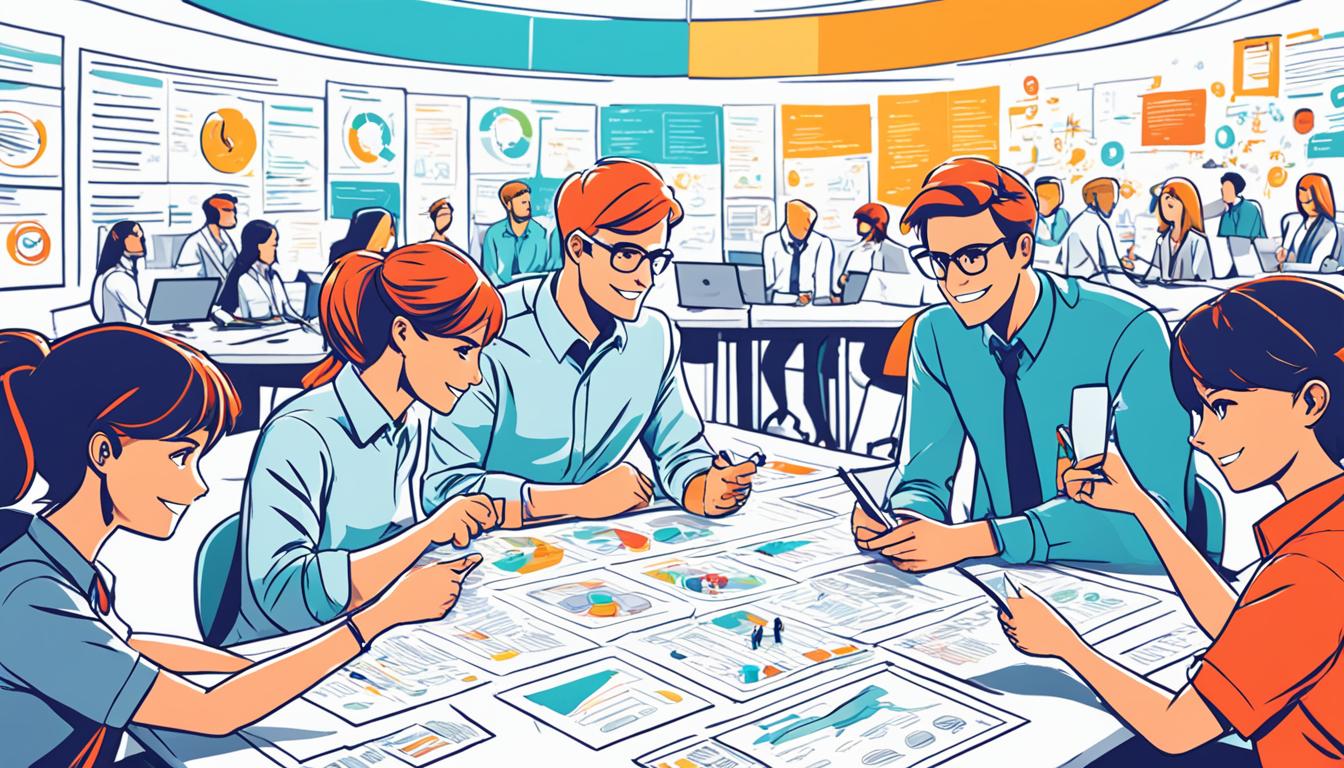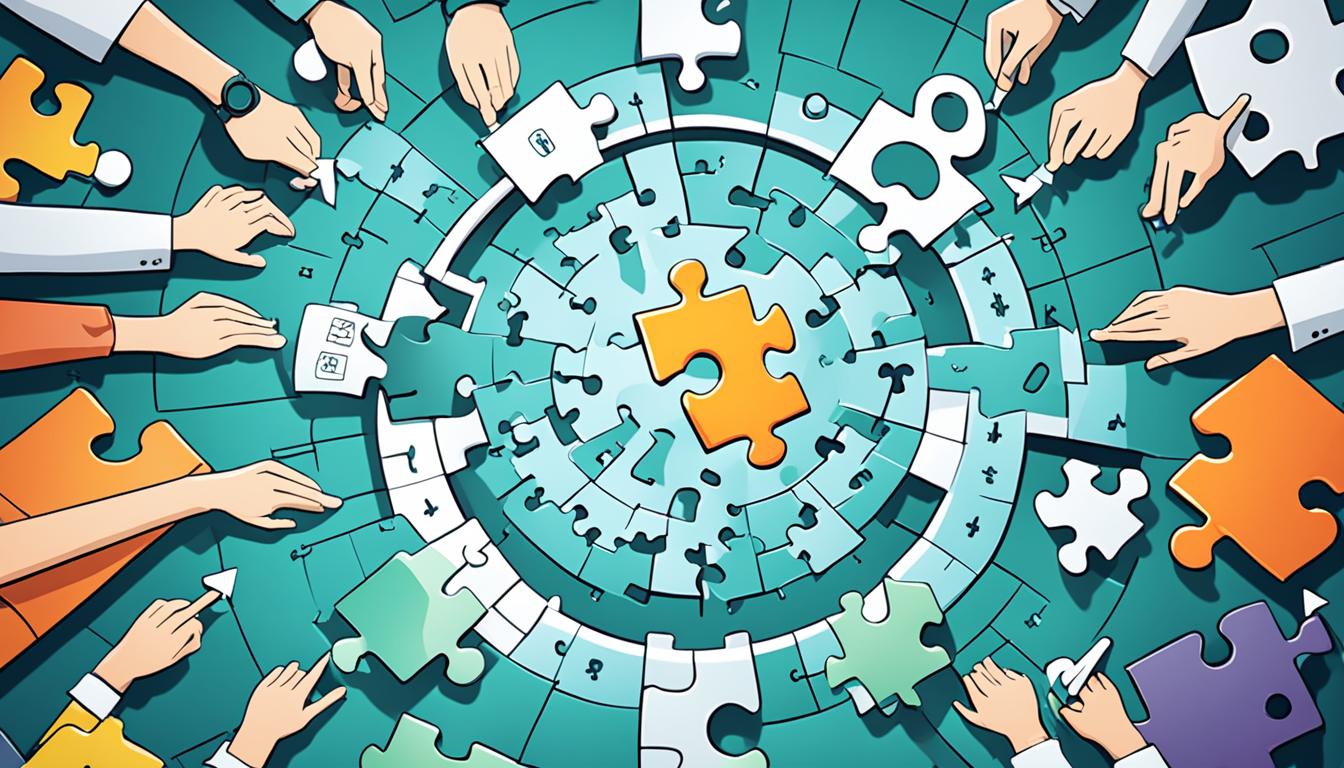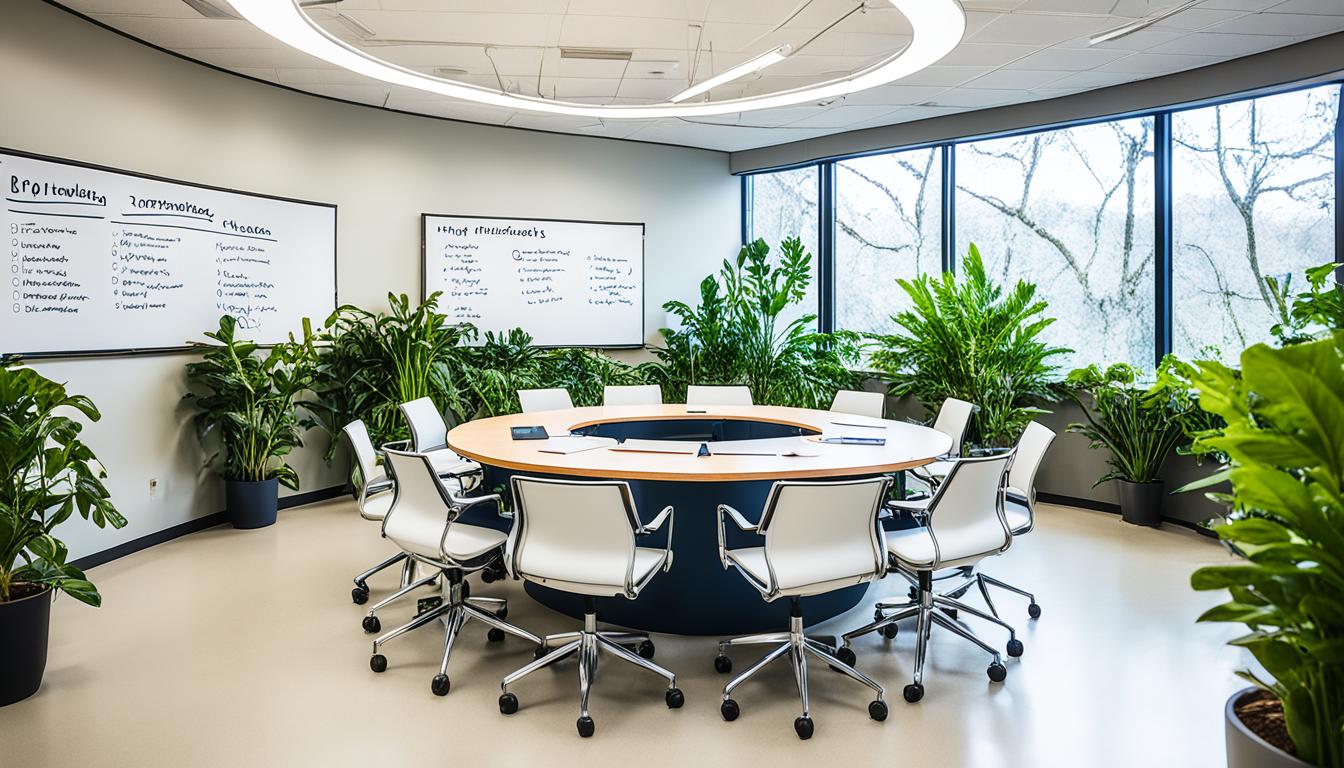
“From Agenda to Action: Crafting Meetings That Drive Results””

“The quality of a person’s life is in direct proportion to their commitment to excellence, regardless of their chosen field of endeavour.” – Vince Lombardi
Meetings are an integral part of professional life. They have the power to drive results, boost productivity, and propel teams towards success. However, without a well-crafted meeting agenda, even the most well-intentioned meetings can often become unproductive and directionless.
Crafting purposeful meeting agendas is key to steering meetings in the right direction. And it all begins with a commitment to excellence, as stated by legendary football coach Vince Lombardi. As you strive for excellence in your professional endeavors, it’s important to apply effective meeting strategies that can transform your meetings from mere discussions to impactful actions.
In this article, we will explore the importance of meeting agendas, discuss key elements of a purposeful agenda, and provide practical tips for creating and facilitating engaging meetings. Be prepared to master the art of crafting meetings that drive results, improving meeting productivity and achieving impactful outcomes.
Key Takeaways:
- Crafting a purposeful meeting agenda is vital for driving results through meetings.
- A well-crafted meeting agenda sets the tone for a productive meeting and helps keep discussions focused.
- Key elements of a purposeful agenda include clear objectives, appropriate time allocation, and participant roles and responsibilities.
- Steps to create an effective meeting agenda consist of identifying the meeting’s purpose, prioritizing agenda items, and distributing the agenda in advance.
- Facilitating engaging meetings involves keeping the meeting focused, encouraging participation and engagement, and discussing follow-up actions for accountability.
Introducing the Meeting Agenda
A well-defined meeting agenda helps to keep discussions on track and ensures that everyone remains focused. Without a well-written agenda, meetings can easily go off course and become unproductive.
“A purposeful meeting agenda sets the stage for a successful and productive meeting. It provides structure and direction, guiding the flow of discussions and keeping participants focused on the objectives at hand.”
An effective meeting agenda serves as a roadmap, outlining the topics to be covered, the order in which they will be addressed, and the time allocated for each item. It allows participants to prepare in advance, ensuring that they come prepared with the necessary information and insights. Moreover, a well-structured agenda enables efficient decision-making and promotes active participation from all attendees. It creates a shared understanding of what needs to be accomplished during the meeting, helping to drive the desired outcomes.
By implementing a purposeful meeting agenda, you can streamline discussions, maximize productivity, and make the most of the valuable time spent in meetings. It serves as a valuable tool for managing meeting dynamics, keeping conversations focused, and achieving productive outcomes.
Next, let’s explore the importance of meeting agendas in greater detail, understanding how they facilitate better communication, productivity at work, and effective collaboration.
The Importance of Meeting Agendas
Meeting agendas play a crucial role in facilitating better communication and enhancing productivity at work. By providing a clear roadmap for discussions and decision-making, an agenda helps to ensure that all meeting participants are on the same page and working towards a common goal.
When meeting agendas are shared in advance, employees have the opportunity to prepare their thoughts and ideas, resulting in more focused and meaningful contributions during the meeting. This level of preparedness leads to better communication as participants are able to articulate their thoughts effectively, ask relevant questions, and provide valuable insights.
Moreover, a well-structured meeting agenda promotes productivity at work. It allows participants to allocate the necessary time for each agenda item, ensuring that there is sufficient time to discuss and address important matters. With a clear understanding of the meeting objectives and agenda items, participants can collaborate efficiently, make informed decisions, and work towards achieving the desired outcomes.
By utilizing meeting agendas as a tool for better communication and productivity, organizations can create a more efficient and effective meeting culture. Teams will feel more empowered and engaged during meetings while achieving greater results in less time.
Benefits of Meeting Agendas:
- Facilitate better communication among team members
- Ensure that all participants are prepared and focused
- Promote efficient use of meeting time
- Enhance collaboration and decision-making
- Improve meeting productivity
Effective meeting agendas serve as a roadmap for success, guiding participants towards better communication, increased productivity, and ultimately, the achievement of desired outcomes.
Key Elements of a Purposeful Meeting Agenda
When it comes to crafting a purposeful meeting agenda, there are key elements that should not be overlooked. These elements work together to ensure that your meetings have clear objectives, appropriate time slots, and defined participant roles and responsibilities.
Clear Objectives
Setting clear objectives for your meeting agenda is crucial. Clearly define what you aim to achieve during the meeting. Whether it’s making a decision, brainstorming ideas, or providing updates, having specific and measurable objectives keeps everyone focused and aligned.
Appropriate Time Slots
Allocating appropriate time slots for each agenda item is essential for managing the meeting’s flow and ensuring that everything gets discussed within the allocated time frame. Be realistic about the time needed for each agenda item and consider the level of complexity and importance of the topic.
Participant Roles and Responsibilities
Assigning participant roles and responsibilities helps to streamline the meeting process. By clearly defining who is responsible for each agenda item or task, you ensure that everyone knows their role and can come prepared. This promotes accountability and active participation, leading to more productive meetings.
| Key Elements | Description |
|---|---|
| Clear Objectives | Setting specific and measurable objectives for the meeting agenda. |
| Appropriate Time Slots | Allotting realistic and appropriate time slots for each agenda item. |
| Participant Roles and Responsibilities | Assigning and communicating participant roles and responsibilities. |
Remember, incorporating these key elements into your meeting agenda will help you create purposeful and effective meetings that drive results.
Steps to Create an Effective Meeting Agenda
To ensure your meetings are focused, productive, and yield desired outcomes, it’s crucial to create an effective meeting agenda. Follow these steps to craft an agenda that sets the stage for a successful meeting:
- Identify the Meeting’s Purpose and Desired Outcomes: Clearly define the purpose of the meeting and outline the specific outcomes you aim to achieve. This helps to keep discussions on track and ensures that everyone understands the meeting’s objectives.
- Prioritize Agenda Items: Once you have identified the purpose and outcomes, prioritize the agenda items based on their importance and urgency. This helps in allocating the appropriate amount of time for each item and ensures that key topics are addressed.
- Finalize and Distribute the Agenda in Advance: Before the meeting, finalize the agenda by organizing the agenda items in a logical order. Include the designated time slots for each item to maintain the meeting’s pace. Distribute the agenda to all participants well in advance, allowing them to prepare and contribute effectively.
By following these steps, you can create a purposeful meeting agenda that aligns with the meeting’s objectives, ensures prioritization of topics, and allows participants to prepare in advance.
“A well-structured meeting agenda enhances meeting efficiency, promotes collaboration, and increases the likelihood of achieving desired outcomes.”
Now, let’s take a look at an example of how these steps can be applied in a practical scenario:
| Agenda Item | Time Allocation |
|---|---|
| Presentation of Project Updates | 15 minutes |
| Discussion on Budget Allocation | 30 minutes |
| Decision on Marketing Strategy | 20 minutes |
| Review of Action Items | 10 minutes |
By prioritizing agenda items and allocating time slots, you ensure that each topic receives appropriate attention. This table exemplifies a well-structured agenda with clear time allocations, promoting efficient meetings and productive discussions.
Tips for Facilitating Engaging Meetings
When it comes to conducting successful meetings, keeping the discussion focused and engaging is of utmost importance. By implementing a few key strategies, you can ensure that your meetings are productive and leave a lasting impact.
1. Keep the Meeting Focused
To maintain focus throughout the meeting, start by setting clear objectives and outlining the agenda. Clearly specify the purpose of each agenda item and allocate a specific time frame for discussion. This helps to prevent tangents and ensures that the meeting stays on track.
2. Encourage Participation and Engagement
Active participation leads to meaningful discussions and improved decision-making. Encourage all meeting participants to contribute their ideas, perspectives, and expertise. Consider implementing techniques such as brainstorming sessions or small group discussions to foster collaboration and engagement.
“The most productive meetings are the ones where everyone actively participates.” — Richard Branson
3. Discuss Follow-Up Actions
At the end of each agenda item, take the time to discuss and document follow-up actions. Clearly assign responsibilities and deadlines to ensure accountability. This allows participants to leave the meeting with a clear understanding of what needs to be accomplished moving forward.
4. Foster a Positive Meeting Environment
A positive and inclusive meeting environment encourages open communication and active engagement. Ensure that all participants feel comfortable expressing their opinions and provide opportunities for everyone to speak. Emphasize the importance of active listening and respect for diverse viewpoints.
By implementing these tips, you can facilitate meetings that are focused, engaging, and productive, ultimately leading to more successful outcomes and actionable results.

Understanding the Importance of Agenda Mastery
Efficient meetings are the backbone of successful collaboration within any organization. To ensure meetings stay on track and objectives are achieved, it is essential to have a well-structured agenda in place. Agenda Mastery is the key to achieving this goal and maximizing meeting productivity. By following the PEARLS framework, you can master the art of creating a well-crafted agenda that sets the stage for efficient and effective meetings.
The PEARLS Framework
The PEARLS framework highlights the core elements necessary for Agenda Mastery:
- Purpose: Clearly define the purpose of the meeting to ensure that all discussions and agenda items align with the meeting’s objectives.
- Engagement: Encourage active participation and engagement from all meeting attendees to foster collaboration and generate innovative ideas.
- Agenda Structure: Organize the agenda in a logical sequence, ensuring that each topic is given adequate time and consideration.
- Roles and Responsibilities: Assign clear roles and responsibilities to meeting participants, allowing for efficient decision-making and accountability.
- Logistics: Pay attention to logistical details such as meeting location, technology requirements, and time constraints to ensure a smooth flow of discussions.
- Summary: Provide a summary or action items at the end of the meeting to reinforce key takeaways and next steps.
By adhering to the PEARLS framework, you can create a well-structured agenda that guides discussions and leads to efficient and productive meetings. This framework emphasizes the importance of Agenda Mastery in meeting management and highlights the key factors necessary for successful meeting outcomes.
Benefits of Agenda Mastery
Agenda Mastery brings numerous benefits to both individuals and organizations:
- Streamlined Discussions: A well-structured agenda keeps discussions focused and ensures that all relevant topics are addressed, allowing for efficient decision-making.
- Preparedness of Participants: Sharing the agenda in advance allows meeting attendees to come prepared, contributing to meaningful discussions and informed decision-making.
- Effective Time Management: An agenda with allocated time slots for each agenda item helps manage time effectively, ensuring that discussions stay on track and meetings end on time.
- Enhanced Collaboration: A clear agenda promotes active participation and engagement among meeting participants, leading to more collaborative and inclusive discussions.
- Improved Meeting Productivity: Agenda Mastery optimizes meeting efficiency, ensuring that meetings are productive and result-oriented, with tangible outcomes.
It is clear that Agenda Mastery is an essential component of successful meeting management. By creating well-structured agendas using the PEARLS framework, you can drive efficient meetings that yield positive outcomes and propel your organization towards success.
Common Mistakes and How to Avoid Them
When it comes to creating meeting agendas, it’s important to be aware of the common mistakes that can hinder productivity and effectiveness. By understanding these mistakes, you can learn to avoid them and ensure that your meetings are focused, efficient, and successful.
Lack of Clear Objectives
One of the most significant mistakes in creating meeting agendas is the lack of clear objectives. Without clear goals and outcomes, meetings can easily become aimless and unproductive. To avoid this, take the time to establish specific objectives for each meeting. Define what you hope to achieve and communicate these objectives to all participants in advance. This clarity will guide the discussions and ensure that everyone is on the same page.
Overstuffed Agenda
Another common mistake is cramming too many topics into a single meeting. While it may be tempting to cover as much ground as possible, an overstuffed agenda can lead to rushed discussions and a lack of depth on important issues. To avoid this, prioritize the most critical topics and allocate sufficient time for each item. Consider whether some topics can be addressed in separate meetings or through alternative means such as email updates or smaller group discussions.
Neglecting Time Estimates
Time management is crucial for productive meetings, and neglecting time estimates can disrupt the flow and effectiveness of the agenda. Set realistic time frames for each agenda item, allowing for meaningful discussions and decision-making. Be mindful of the pace of the meeting and adjust time allocations as needed. Remember, it’s better to have a few well-discussed items than a long list of hurried discussions.
By avoiding these common mistakes, you can create meeting agendas that promote clarity, focus, and productivity. Setting clear objectives, prioritizing agenda items, and allocating realistic time frames are key to running successful meetings.
Next, let’s explore the importance of meeting agendas in professional settings and the benefits they bring to streamline discussions, encourage preparedness, and enhance participant engagement.
The Importance of Meeting Agendas in Professional Settings
In professional settings, having a well-structured agenda is crucial for ensuring productive and focused meetings. A streamlined discussion can be achieved through the effective use of meeting agendas, enabling participants to stay on track and make the most of their time together.
By providing a clear roadmap for the meeting, a well-structured agenda helps to establish expectations and ensures that all relevant topics are covered. It allows participants to come prepared, having reviewed the agenda in advance and ready to contribute meaningfully to the discussion.
With a preparedness of participants, meetings can be conducted more efficiently, maximizing the value of everyone’s time. A well-defined agenda assigns specific time slots for each agenda item, preventing discussions from dragging on unnecessarily or dominating the entire meeting. This ensures that each topic receives adequate attention and prevents valuable discussions from being cut short due to time constraints.
Furthermore, a well-structured agenda promotes active engagement and participation from all attendees. It provides a framework for collaborative decision-making, allowing everyone to contribute their perspectives and insights. By outlining the desired outcomes and objectives of the meeting, the agenda sets a clear direction and empowers participants to work towards achieving the meeting goals.
“A well-structured agenda is like a compass for meetings in professional settings. It keeps discussions on track, ensures preparedness of participants, and facilitates focused and productive meetings.”
| Benefits of Meeting Agendas in Professional Settings | How Meeting Agendas Help |
|---|---|
| 1. Streamlining Discussion | Providing a clear roadmap and preventing off-topic conversations. |
| 2. Facilitating Preparedness | Allowing participants to review the agenda in advance and gather relevant materials. |
| 3. Encouraging Active Contribution | Creating an inclusive environment where everyone’s opinions and insights are valued. |
By implementing a well-structured agenda and recognizing the importance of meeting preparation, professional settings can greatly enhance their meeting productivity and achieve more meaningful outcomes. It is a powerful tool that guides discussions, keeps participants engaged, and leads to successful collaboration and decision-making.
Benefits of Having a Meeting Agenda
Having a meeting agenda brings numerous benefits, including streamlining discussions, facilitating preparedness of participants, and encouraging active contribution. It ensures that all vital topics are addressed and improves meeting productivity.
When you have a well-structured meeting agenda, it streamlines discussions by providing a clear roadmap of topics to be covered. Participants can easily follow the agenda, understand the flow of the meeting, and contribute relevant insights and ideas.
The meeting agenda also facilitates preparedness of participants. When they receive the agenda in advance, they have time to gather information, review documents, and prepare their thoughts. This ensures that everyone comes to the meeting well-informed and ready to actively engage in the discussion.
Moreover, a meeting agenda encourages active contribution by setting clear expectations for participation. When every item on the agenda has designated time slots, participants know when to contribute their ideas and opinions. This creates a dynamic and inclusive environment where everyone has the opportunity to contribute effectively.
| Benefits of Having a Meeting Agenda |
|---|
| Streamlining Discussions |
| By providing a clear roadmap of topics, a meeting agenda keeps discussions focused and on track. |
| Facilitating Preparedness |
| Participants have time to gather information and prepare themselves before the meeting, enhancing overall productivity. |
| Encouraging Active Contribution |
| Each agenda item has designated time slots, ensuring that all participants can contribute effectively. |
Key Elements of an Effective Meeting Agenda
An effective meeting agenda plays a crucial role in ensuring productive and successful meetings. By incorporating key elements such as meeting structure, clear goals, and participant engagement, you can enhance the overall effectiveness of your meetings.
Meeting Structure
The meeting structure refers to the organization and flow of the agenda items. It is essential to arrange the agenda items in a logical order that allows for smooth transitions between topics. Begin with any necessary updates or announcements, followed by the main discussion items, and conclude with a recap and action items. A well-structured meeting agenda keeps everyone focused and ensures that all agenda items are covered within the allocated time.
Clear Goals
Setting clear goals for each agenda item is essential for driving the meeting’s purpose and desired outcomes. Clearly define what you aim to achieve with each agenda item, whether it’s making a decision, seeking input, or brainstorming ideas. Clear goals provide a framework for the discussion and help participants understand the purpose and expected outcomes of each agenda item.
Participant Engagement
Engaging meeting participants is key to fostering collaboration, creativity, and problem-solving. Encourage active participation by incorporating interactive activities, such as small group discussions or brainstorming sessions. Provide opportunities for participants to share their perspectives and input on agenda items. Remember to allocate sufficient time for discussion and ensure that everyone has a chance to contribute. Engaged participants are more likely to be invested in the meeting’s outcomes and actively contribute to achieving the meeting goals.
| Key Elements | Description |
|---|---|
| Meeting Structure | Organize agenda items in a logical order for seamless transitions and effective time management |
| Clear Goals | Define specific objectives for each agenda item to drive purposeful discussions |
| Participant Engagement | Encourage active participation and collaboration to foster creativity and problem-solving |
By incorporating these key elements into your meeting agenda, you can optimize meeting outcomes, enhance participant engagement, and drive results. A well-structured agenda with clear goals sets the stage for meaningful discussions, while participant engagement promotes collaboration and idea generation. Take the time to carefully craft your meeting agenda, ensuring that it aligns with the meeting’s purpose and desired outcomes. With an effective meeting agenda in place, you can create a productive and focused meeting environment that leads to successful outcomes.
Conclusion
Crafting a purposeful meeting agenda is essential for driving results through meetings. By setting clear objectives, allocating appropriate time, and engaging participants, meetings can become powerful tools for collaboration and decision-making. A well-structured agenda sets the tone for a productive meeting, ensuring that discussions stay focused and on track.
When you tailor each agenda to the specific meeting’s purpose and desired outcomes, you create a roadmap for success. Clear objectives provide a sense of direction, enabling participants to align their contributions with the meeting’s goals. Allocating appropriate time slots for each agenda item ensures that discussions are thorough, yet time-efficient.
Engaging participants throughout the meeting encourages active involvement, leading to more effective discussions and decision-making. By sharing the agenda in advance, you give attendees the opportunity to prepare their thoughts and contribute meaningfully. Additionally, a well-crafted agenda helps to streamline discussions, maximizing the productivity of the meeting.
In conclusion, a purposeful meeting agenda is a vital tool for driving results in meetings. By creating clear objectives, allocating time effectively, and actively engaging participants, you can harness the collaborative power of meetings and achieve your desired outcomes.






























